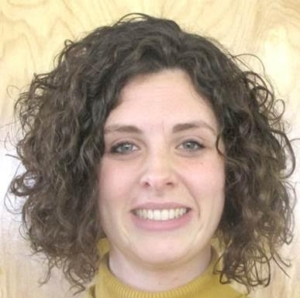Bridging the Care Between Eating Disorders and Sexual Violence
Sexual violence advocacy is a world of two-sided realities. Survivors often share that they have mixed feelings in the aftermath and healing process. Some examples of these binary realities include:
- Hating the abuse, but loving the person who abused them.
- Survivors who avoid sexual intimacy vs. survivors who crave sexual intimacy.
- Blaming their bodies for the abuse, but wanting to keep their bodies safe in the future.
The healing process holds a lot of gray area. Working with survivors of sexual violence who are also struggling with an eating disorder often feels like a no-win situation. Survivors may use food control, bingeing, or purging to help them with working through the pain of the sexual abuse. If you focus on just trauma-symptoms, you may make the symptoms of their eating disorder worse. If you focus only on the eating patterns, it could leave trauma reactions, like flashbacks, triggers, or nightmares, unchecked.
Two sides of the same coin
In truth, you are working with two sides of the same coin. Trauma survivors deal in binary realities. Their helpers have to do the same thing if they want to help them find a care plan that will lead to wellness and healing. The two sides of this healing coin are:
- Eating disorder behaviors cause harm to the body.
- Eating disorder behaviors help the person survive their trauma.
Both statements are true. Healing helpers must understand that it is not their role to push one or the other side of the coin in the healing journey. The role of the helper is to provide information and support to the survivor. It is to help the person understand the impacts and consequences of their choices in a safe environment. It is to appreciate and build upon the strength and creativity that it takes for a person to survive.
Bridging the care for survivors with eating disorders
With more than 40 years of experience working with people who survive sexual violence, advocates know there is a connection. Both anecdotal experience and research tell us that when someone experiences sexual violence, like child sexual abuse, sexual harassment, or rape, they may also be at increased risk for developing an eating disorder.
Healing helpers who are aware of both sides of the coin can bring this knowledge into their intake and assessment processes. They can ask questions about trauma history, as well as questions about eating patterns. They can introduce supportive activities that allow space for exploring ways that food control may have helped someone survive to this point. They can plan for ways to cope with trauma symptoms in the future.
Some examples of activities that advocates have used when working with someone who struggles with an eating disorder include:
Art & Expression Activities: Writing and decorating a thank-you card to the body, thinking about all of the ways that our bodies have supported us and helped us to thrive during difficult times.
Body Connections Activities: Exploring signs and symptoms of a challenging relationship with the body, mapping ways that we see these connections play out, and journaling or talking through what we gain and lose from these connections as they are.
Healthy Sexuality Activities: Understanding the human sexual response cycle, and the ways that we work together with our bodies to experience touch, intimacy, and healing.
There is much that we can learn from one another as helpers. Consider connecting with professionals in your area to talk through what you’re seeing as healing helpers. These collaborative opportunities will allow for exchange of a ideas and a stronger, trauma-informed referral network in your community.
The healing cycle The people we help often move back and forth through different stages and cycle through many common reactions as they learn and grow and experience life. The coin may flip toward one side or the other depending on the stressors a person experiences.
Healing helpers can be a source of support and provide gentle reminders that these changes are a normal part of the healing process. Moving back toward using old coping strategies, like bingeing or purging, does not mean that a person cannot continue in their healing journey. It means that they revisited something that worked for them in the past. They can find new things that work for them in the future.
Survivors of sexual violence can heal. People who experience eating disorders can find health, wellness, and balance in their lives. Many people I know have done both.
Ali is the Contract Liaison at the PA Coalition Against Rape. Through her involvements as a trainer & technical assistance provider at the NSVRC, student activist, child advocate, counselor, prevention educator, and medical and legal advocate, Ali has been involved in the movement to end sexual violence for 12 years.





